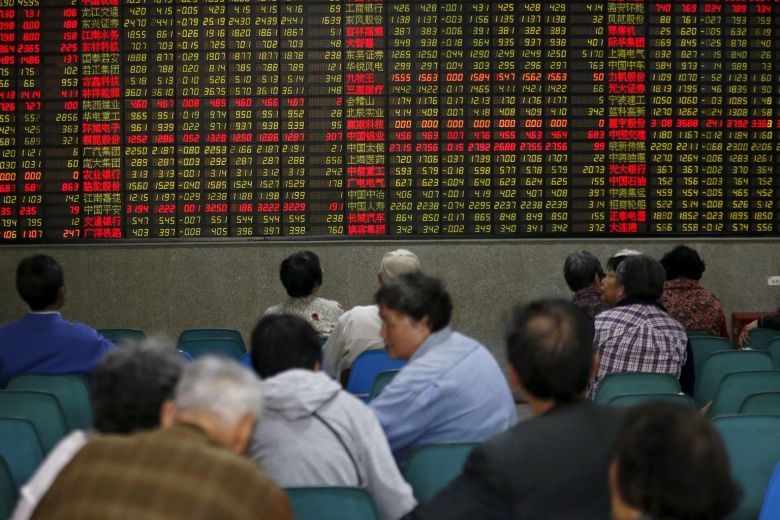Stocks in Asia traded higher Monday afternoon as data releases showed Chinese factory activity springing a positive surprise in November.
Japanese stocks led gains among major markets in the region, with the Nikkei 225 adding 1.1% in afternoon trade, as shares of index heavyweight and robot maker Fanuc gained 1.48%. The Topix index also rose 1.03%.
Mainland Chinese stocks rose by the afternoon, with the Shanghai composite gaining 0.35% and the Shenzhen component adding 0.53%. The Shenzhen composite advanced 0.476%. Hong Kong’s Hang Seng index also rose 0.46%.
South Korea’s Kospi advanced 0.35%. Shares in Australia also edged higher as the S&P/ASX 200 gained 0.58%.
Overall, the MSCI Asia ex-Japan index traded 0.47% higher.
| TICKER | COMPANY | NAME | PRICE | CHANGE | %CHANGE |
|---|---|---|---|---|---|
| NIKKEI | Nikkei 225 Index | NIKKEI | 23529.50 | 235.59 | 1.01 |
| HSI | Hang Seng Index | HSI | 26448.41 | 101.92 | 0.39 |
| ASX 200 | S&P/ASX 200 | ASX 200 | 6862.30 | 16.30 | 0.24 |
| SHANGHAI | Shanghai | SHANGHAI | 2871.24 | -0.75 | -0.03 |
| KOSPI | KOSPI Index | KOSPI | 2089.58 | 1.62 | 0.08 |
| CNBC 100 | CNBC 100 ASIA IDX | CNBC 100 | 8299.18 | 46.15 | 0.56 |
China’s manufacturing data surprise
A private survey of Chinese factory activity in November came in stronger than expected on Monday, with the Caixin/Markit manufacturing Purchasing Managers’ Index for the month rising to 51.8. That was higher than expectations of a 51.4 reading by economists in a Reuters poll. The October PMI reading came in at 51.7.
The 50-point mark separates growth and contraction in PMI readings.
Data released over the weekend showed the official Purchasing Managers’ Index (PMI) was at 50.2 in November, according to China’s National Bureau of Statistics. That was beyond expectations of a November reading of 49.5 by analysts in a Reuters poll. The official PMI reading had come in at 49.3 in October.
“The move back into expansionary mode in China’s official manufacturing PMI is good news … (but) also somewhat tempered by the facts China’s industrial sector is still besieged by deflationary risks and rising borrowing costs while the domestic consumer remains constraint by higher food prices,” Rodrigo Catril, senior foreign exchange strategist at National Australia Bank, wrote in a note.
US-China trade watch
Uncertainty continued to cloud the outlook for U.S.-China trade negotiations and protests in Hong Kong.
Axios reported Sunday, citing a source close to U.S. President Donald Trump’s negotiating team, that the anticipated deal is now “stalled because of Hong Kong legislation” and a “phase one” agreement between Washington and Beijing would only happen “year-end at the earliest.” The report also said Trump is expected to pause on planned tariffs in December.
Chinese state media said Sunday that Beijing wants a rollback of tariffs in the phase one trade deal that the two economic powerhouses are aiming to reach.
Meanwhile, civil unrest continued to rock Hong Kong as the city saw fresh protests over the weekend.
U.S.-China tensions heightened last week after Trump signed two pieces of legislation supporting protestors in Hong Kong, prompting China’s foreign ministry to claim Washington has “sinister intentions” after the bills were signed into law. A spokesman for the Chinese foreign ministry added Friday the country will take “strong counter-measures” against the U.S.
The situation in Hong Kong has raised concerns of strains in trade negotiations between Washington and Beijing ahead of Dec. 15, when new tariffs on Chinese exports to the U.S. are set to kick in.
Ray Farris, chief investment officer for South Asia at Credit Suisse, told CNBC’s “Squawk Box” on Monday that “it’s hard to know” when a deal may be struck between the two economic powerhouses.
“We tend to think there’ll be a deal by the end of the year. The key part of that deal will be that the U.S. plan to increase tariffs on Dec. 15 probably will be shelved,” Farris said.
“Will there be any tariff rollback? I think maybe there could be a rollback on say the September tariff increase and any deal is likely to include some sort of schedule for tariff reduction going into the future, conditional on the terms of the deal being met,” he added.
Currencies and oil
The U.S. dollar index, which tracks the greenback against a basket of its peers, was at 98.323 after spiking to levels above 98.4 late last week.
The Japanese yen traded at 109.68 against the dollar after weakening from levels below 108.9 last week. The Australian dollar changed hands at $0.6774 after declining from levels above $0.678 in the previous trading week.
Oil prices rose in the afternoon of Asian trading hours. International benchmark Brent crude futures added 1.31% to $61.28 per barrel. U.S. crude futures gained 1.67% to $56.09 per barrel.

